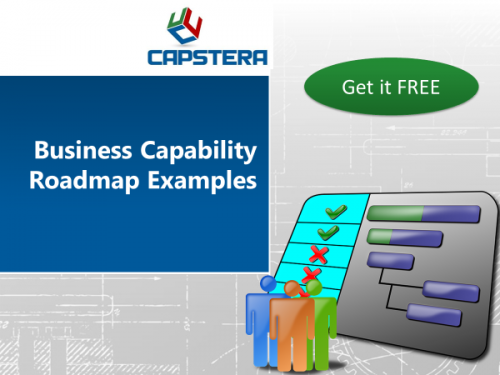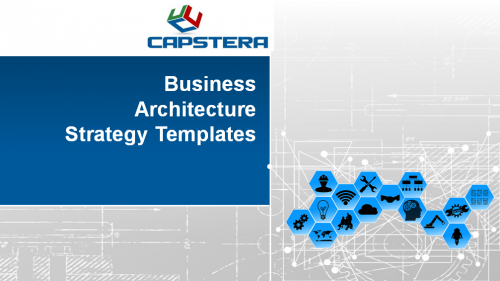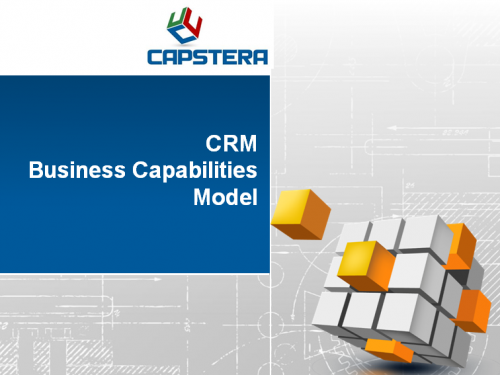Data Management Capabilities Map
Price range: U.S. $499 through U.S. $1,499
Capstera’s Data Management Capabilities Map is an organized list of everything a data management function in an enterprise does. The data management capabilities map provides enterprise architects, data architects, and IT leaders with a cohesive and coherent set of capabilities essential to manage the data function.
As data explodes in volume, velocity, and variety, it requires a robust managerial and governance framework and an understanding of the lifecycle to manage the function efficiently. That is where Capstera’s data capability model comes in handy – providing a holistic view of what it takes to maintain data. It can be used for creating lightweight data governance and stewardship plans and a roadmap for data management capability buildout.
Data Management Capabilities Map Deliverables:
The Data Management Capabilities Map comprises ~230 capabilities across three levels and includes the following deliverables:
- An Excel spreadsheet with the list of capabilities.
- A PowerPoint format with the top two levels presented in a nested visualization.
- A Word document with capabilities in a multilevel list format.
- Capability KPIs (at level 2)
- Capability Definitions (at level 3)
Watch Data Management Capabilities Intro Video
The data management capabilities comprise ~230 capabilities across three levels.
(Note: As the data management capabilities map is a digital deliverable, we do not accept returns or issue refunds. So, please read the product description carefully before making a purchase. It is also essential to understand what the product is NOT as much as what it is.)
Data Management is a Crucial Capability:
Data Management is a crucial capability for enterprises because it ensures the efficient and effective use of data in decision-making, operations, and compliance. As data volume, velocity, and variety increase, businesses must harness this resource to remain competitive and drive innovation. Implementing a Data Management discipline involves several key steps which help organizations maintain data quality, security, and accessibility.
-
Establish a Data Governance framework: Create a structure for defining data ownership, stewardship, and roles. This enables accountability, standardization, and the enforcement of data policies and procedures.
-
Develop Data Quality initiatives: Prioritize data quality by setting standards, validating data, and implementing measures for correcting errors. Accurate and consistent data empowers organizations to make better decisions and improve efficiency.
-
Implement Data Security Measures: Safeguard sensitive and confidential information by adopting robust security measures, such as encryption, access controls, and regular audits. This protects against data breaches and ensures compliance with regulations.
-
Invest in Data Integration: Integrate disparate data sources to create a unified information view. This enables organizations to derive insights and uncover hidden patterns, facilitating better decision-making and improved business outcomes.
-
Promote Data Literacy: Equip employees with the skills and knowledge to effectively understand, analyze, and leverage data. Data-literate employees are more likely to make data-driven decisions, fostering a culture of data-driven innovation.
-
Evaluate and Adapt: Regularly review and refine Data Management strategies to ensure they align with evolving business objectives, regulatory requirements, and technology advancements. Continuous improvement is critical for maintaining an effective Data Management discipline.
Our Data Management capability model is a starting point for a holistic understanding of the data management landscape. (Please realize this is NOT a data strategy and governance framework or a cookbook for implementing data management. Instead, this list of essential data management capabilities is decomposed into three levels.)
What the Data Management Capabilities Map is NOT: The Data Management Capability Model is NOT an actual enterprise data model. It does NOT feature the real subject areas or data entities. Moreover, it is NOT a conceptual, logical, or physical data model. Instead, it is a managerial framework of data management and decomposing the activities in the value chain.
Value and Uses of the Data Management Capabilities Map
A capabilities map is a fundamental and foundational entity in the business architecture continuum. A Data Management Capability Map encapsulates end-to-end aspects of the data management functions with a detailed, multilevel capabilities list. It is about managing the business of data.
There are several benefits of leveraging a Data Management Capability Model:
- Gain a holistic perspective of what data capabilities are necessary for an enterprise
- Conduct a maturity assessment of the data management function and develop a roadmap to achieve the desired state
- Create a RACI matrix to assign roles and responsibilities and build accountability
- Set up a lightweight governance structure to help the data management function perform at a high level
Created by business architects and data domain experts, the data management capabilities model is detailed, in-depth, and conforms to the construct of MECE (mutually exclusive and collectively exhaustive).
Provisos:
- We cannot accept refunds or returns as the products are digital deliverables.
- Please realize that in some circumstances, a generic capability model may or may not be entirely applicable to your enterprise needs.
- We do not offer implied or explicit warranties, which are sold as-is.
- The sale does not include customization or implementation help.
- Please review our standard Ecommerce Store Terms and Conditions.
Need Customization Help?
Data Management Capabilities Map
Price range: U.S. $499 through U.S. $1,499





